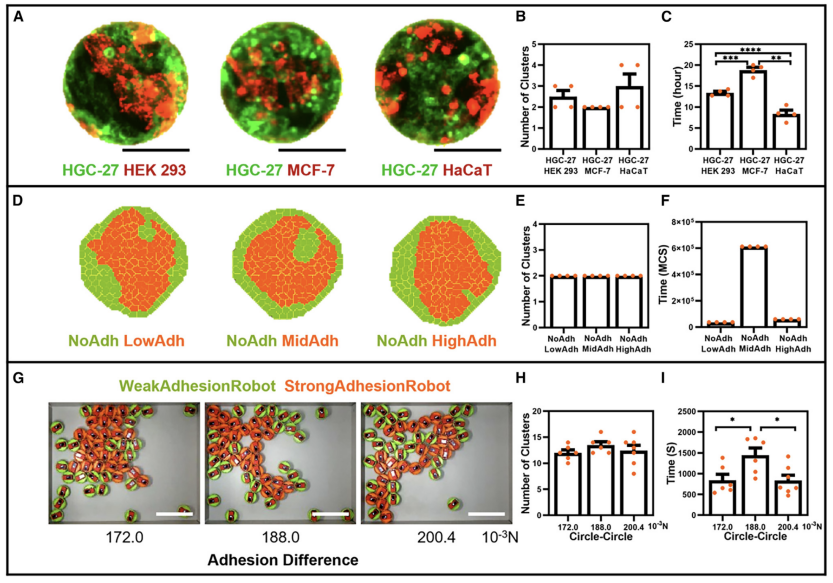Natural collective behaviors in animals have long inspired developments in robotics, such as multi-robot path planning inspired by ant colonies and obstacle avoidance and cooperative control modeled after fish schools. With advances in biology and interdisciplinary research, mechanisms underlying collective cellular behaviors in developmental biology are now also being used to guide the development of robotics, bringing new inspirations to biomimetic research in the field.
Researchers in the Micro-Nano Robotics Group at the Shenyang Institute of Automation (SIA), Chinese Academy of Sciences (CAS), have conducted swarm robotics experiments to validate the "Differential Adhesion Hypothesis" in embryonic development, providing a new means of understanding morphogenesis and collective intelligent behaviors in early development.

Adhesion disparity level nonlinearly influences the sorting speed of robot/cell swarms (Image by the research group)
The research team designed a swarm system consisting of 50 circular robots, each with a diameter of ~10 cm. By embedding magnets of varying strengths into the robots’ shells, they simulated differences in intercellular adhesive forces. Experiments revealed a nonlinear relationship between the difference in adhesive strength and the speed of cell sorting: when the difference in simulated adhesive force was either large or very small, sorting was completed quickly, whereas at intermediate levels of difference, the sorting process slowed significantly. This finding was later validated through cell culture experiments. Researchers speculate that biological embryos may regulate specific gene expressions to control differences in cellular adhesion, thereby precisely controlling the timing and rhythm of development.
The related findings were published in Cell Reports Physical Science, with Mengyun Pan as the first author, Professor Yongliang Yang and Professor Lianqing Liu as corresponding authors. The study was supported by projects from the National Natural Science Foundation of China.
This research integrates engineering science with life science, using robot swarms as a "physical simulation platform" to study collective cellular behaviors, revealing the critical role of physical interactions in biological development. By developing robot swarm control methods deeply integrated with cellular behaviors, the research team aims to construct silicon-based life-like robot swarm systems for life science research, enabling roboticized scientific exploration in biology. This approach is expected to enhance the efficiency of life science research and expand the applications of robotics.
The findings were highlighted in an article titled Robots demonstrate principles of collective intelligence, published in the Nature Outlook section of the international academic journal Nature on July 15.
Nature Outlook Article DOI: doi.org/10.1038/d41586-025-02269-4